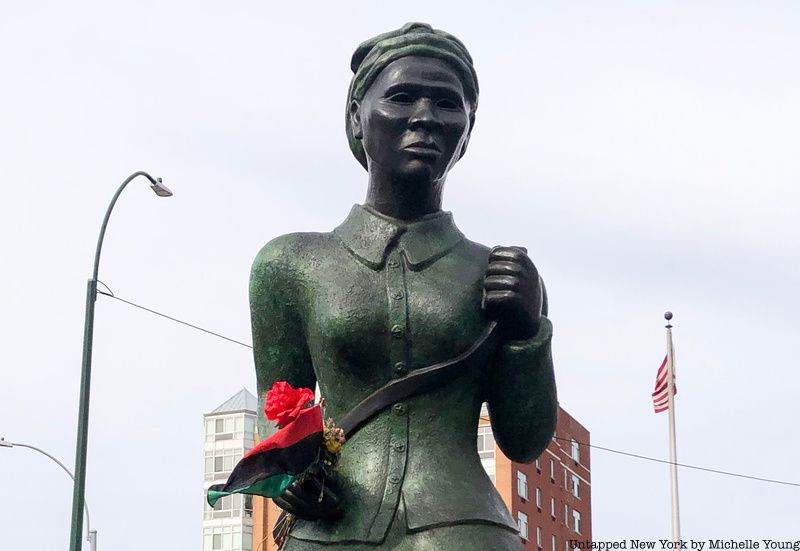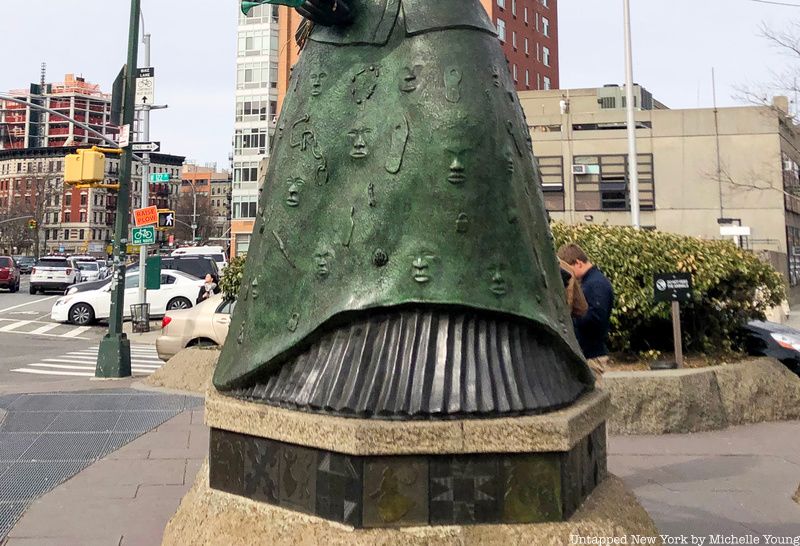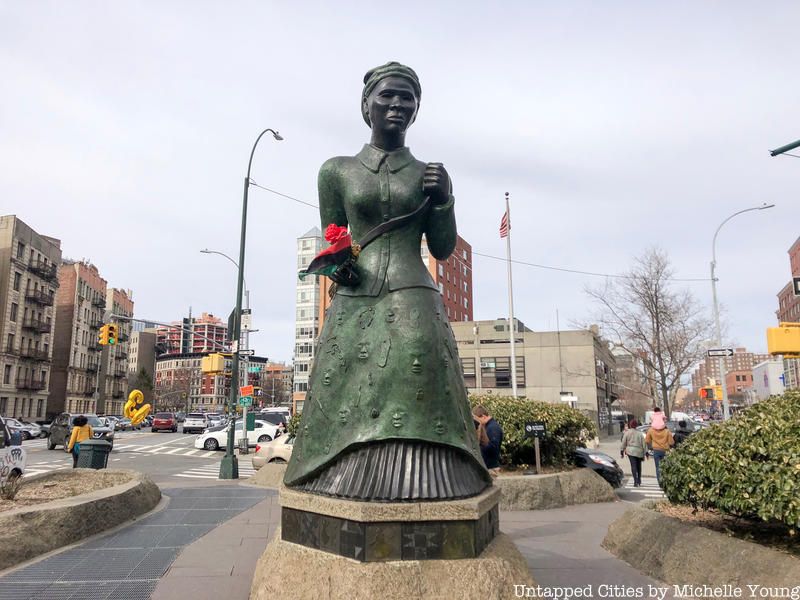Last-Minute NYC Holiday Gift Guide 🎁
We’ve created a holiday gift guide with presents for the intrepid New Yorker that should arrive just in time—


Amid the bustle of Harlem, a Harriet Tubman memorial stands in celebration of the courage, commitment and compassion of the towering female figure. Swing Low, the surreal public art sculpture by Black artist Alison Saars, commissioned by the NYC Percent for Art program, depicts the abolitionist as the powerful engine of the underground railroad, the network of escape routes and safe houses that brought scores of slaves to freedom. In honor of National Women’s History month, as well as the anniversary of her death today, pay a visit to the Harriet Tubman statue right here in New York City.
This monumental Harriet Tubman memorial was erected in 2008 in a small space where Frederick Douglass Boulevard, St. Nicholas Avenue and 122nd St. triangulate to form Harriet Tubman Triangle public park. The over ten foot bronze statue has a remarkable dual patina of black in the areas of her skin and a green in the clothing she wears. Her enormous billowing petticoated skirt is embedded with faces representing the freedom seekers she helped. Emerging from the back of her skirt are thick gnarled tree roots that give the appearance of being pulled from their foundation as Harriet plows ahead, determined in her goal to march on in the name of freedom.

Harriet Tubman was born into slavery around 1820 and became an abolitionist and political activist. After her own escape north in 1849 she made some thirteen trips south to accompany enslaved people back up north to safety and freedom, risking her own freedom with each trip. Because of her knowledge of southern towns and transportation routes, she became valuable to the union military commanders during the Civil War and was a Union scout and spy. Transforming herself into an old woman she would wander the streets under Confederate control and learn about Confederate troop placements and supply routes. Serving as a scout, spy, guerrilla soldier and nurse she is considered the first African American woman to serve in the military. Much of this history is documented in the 2019 film, Harriet.
Harriet Tubman did not rest after the war. Her tenacious spirit continued to fuel her conviction by raising funds for freedmen, joining the quest for Women’s Suffrage and caring for the elderly, eventually establishing the Harriet Tubman Home for the Aged in Auburn, NY. She died on March 10, 1913 and was buried with military honors at Fort Hill Cemetery in Auburn, NY.

The portrayal of Harriet Tubman in Swing Low as the powerful and fearless train of freedom is hardly overstated in the artful sculpture that stands on the traffic island of a Harlem intersection. Facing South in righteous conviction for another trip as a conductor on the Underground Railroad, the Bronze and Chinese granite statue is lined with alternating tiles depicting events of Harriet Tubman’s life and traditional quilting patterns. The surrounding area around the Harriett Tubman memorial is landscaped with plants native to both New York and Maryland, Tubman’s home state, provides a contemplative space to consider Tubman’s legacy.

Next, check out our guide to Harlem! And read about the Washington Heights Underground Railroad house that may soon be demolished.
Subscribe to our newsletter